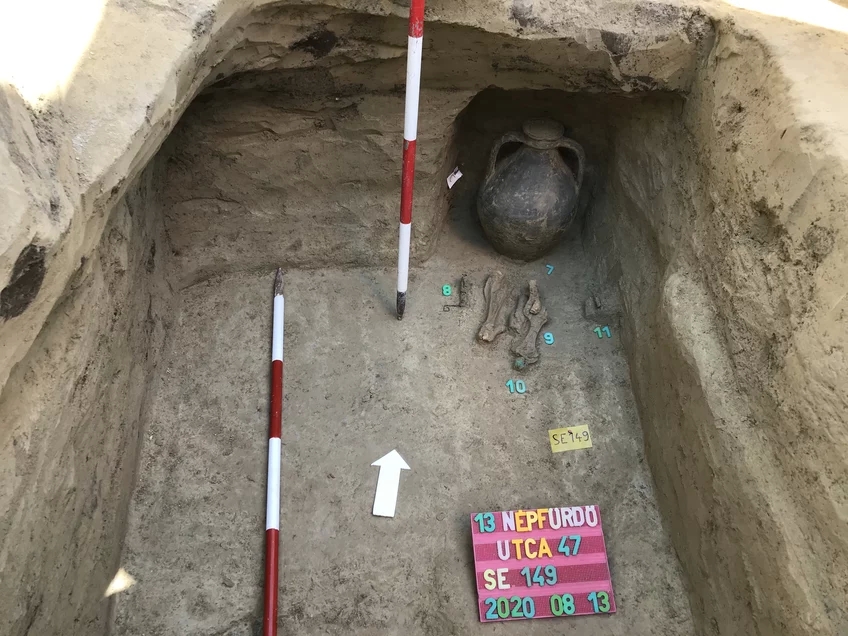We reach more than 65,000 registered users in Dec!! Register Now

Origin and diversity of Hun Empire populations
- April 17, 2025
- 3 Views
- 0 Likes
- 0 Comment
Far-reaching genetic ties between the Mongolian steppe and Central Europe under Hun rule
A multidisciplinary and international research project has brought fresh insights into the origins and diversity of the populations that lived under and after the Hun empire between the late 4th and 6th century CE in Central Europe. Combining forefront archaeogenomic analyses with archaeological and historical investigation, the study connects some of the European Hun-period individuals directly to some high-status elite of the earlier Xiongnu Empire - a powerful nomadic empire centered in the Mongolian steppe centuries before the Huns emerged north and west of the Black Sea. It also shows that only few Hun-period individuals carried East-Asian ancestry, and that the newcomers of the Hun period were of rather mixed origin. Thus, it sheds light on the much-discussed population dynamics that shaped Eurasian history during Late Antiquity.
© Boglárka Mészáros, BHM Aquincum Museum
To address this question, researchers analyzed the DNA of 370 individuals that lived in historical periods spanning around 800 years, from 2nd century BCE to 6th century CE, encompassing sites in the Mongolian steppe, Central Asia, and the Carpathian Basin of Central Europe. In particular, they examined 35 newly sequenced genomes ranging from: a 3rd-4th century site in Kazakhstan and 5th-6th century contexts in the Carpathian Basin, including exceptional Hun-period burials that exhibit Eastern or “steppe” traits often linked to nomadic traditions (i.e. “eastern-type” burials).
The study was carried out as part of the ERC Synergy Grant project HistoGenes (No. 856453), by a multidisciplinary research team of geneticists, archaeologists and historians, including researchers from the Max Planck Institute for Evolutionary Anthropology in Leipzig, Germany. The results showed that there was not a large Asian- or steppe-descended community living in the Carpathian Basin after the Huns' arrival. However, they identified a small but distinct set of individuals - often belonging to the “eastern-type” burials - who did carry significant East Asian genetic signatures. Advanced comparisons of genealogical connections (the analysis of shared DNA segments known as identical-by-descent, or IBD) led to a remarkable discovery. Co-first author Guido Alberto Gnecchi-Ruscone of the Max Planck Institute for Evolutionary Anthropology adds: “It came as a surprise to discover that few of these Hun-period individuals in Europe share IBD links with some of the highest-ranking imperial elite individuals from the late Xiongnu Empire”. These connections also include an individual from the largest terrace tomb ever discovered in a Xiongnu context.
Connections across the steppe and mixed legacy
© Rómer Flóris, Museum of Art and History
The findings also underscore that the Huns’ arrival in Europe contrasts with that of the Avars two centuries later. Co-corresponding author Walter Pohl of the Austrian Academy of Sciences adds: “The Avars came directly to Europe after their East-Asian empire had been destroyed by the Turks, and many of their descendants still carried considerable East Asian ancestry until the end of their rule in c. 800. The ancestors of Attila’s Huns took many generations on their way westward and mixed with populations across Eurasia”.
Implications for European history
This research illuminates how past societies in the Carpathian Basin adapted and changed in response to new arrivals. Co-corresponding author Zuzana Hofmanová of the Max Planck Institute for Evolutionary Anthropology adds: “Although the Huns dramatically reshaped the political landscape, their actual genetic footprint - outside of certain elite burials - remains limited”. Instead, the population as a whole appears to be predominantly of European origin and have continued local traditions, with some newly arrived steppe influences woven in.Co-corresponding author Johannes Krause, director of the Department of Archaeogenetics at the Max Planck Institute for Evolutionary Anthroplogy, adds: “From a broader perspective, the study underscores how cutting-edge genetic research, in combination with careful exploration of the archaeological and historical context, can resolve centuries-old debates about the composition and origin of past populations”. While many questions remain, this work offers compelling evidence for direct connections between the Hun period population, the steppe and the Xiongnu Empire, deepening our understanding of the dynamic networks that linked East and West Eurasia in the past.
List of Referenes
- Guido Alberto Gnecchi-Ruscone, Zsófia Rácz, Salvatore Liccardo, Juhyeon Lee, Yilei Huang, Luca Traverso, Rita Radzevičiūtė, Zsuzsanna Hajnal, Anna Szécsényi-Nagy, Balázs Gyuris, Orsolya Mateovics-László, Zsolt Bernert, Tamás Szeniczey, Tamás Hajdu, Boglárka Mészáros, Marianna Bálint, Balázs Gusztáv Mende, Bryan Miller, Zainolla Samashev, Ainash Childebayeva, Leyla Djansugurova, Patrick Geary, Harald Ringbauer, Tivadar Vida, Choongwon Jeong, Walter Pohl, Johannes Krause, Zuzana Hofmanová. Ancient genomes reveal trans-Eurasian connections between the European Huns and the Xiongnu Empire. Proceedings of the National Academy of Sciences, 2025; 122 (9) DOI: 10.1073/pnas.2418485122
Cite This Article as
No tags found for this post









